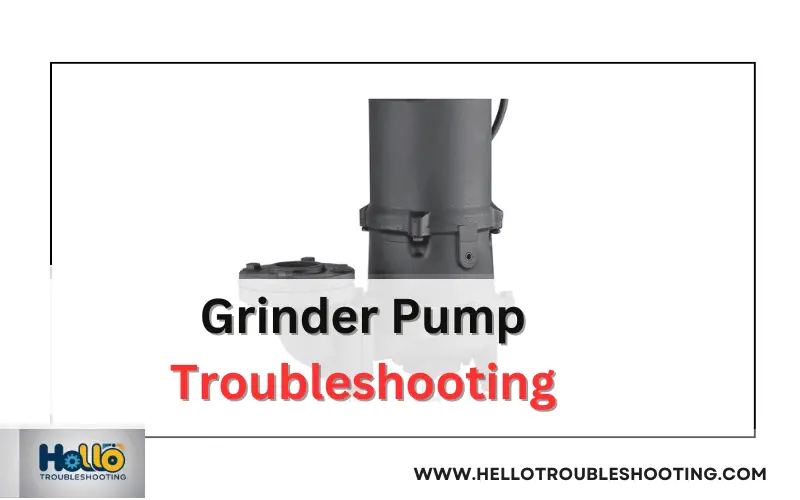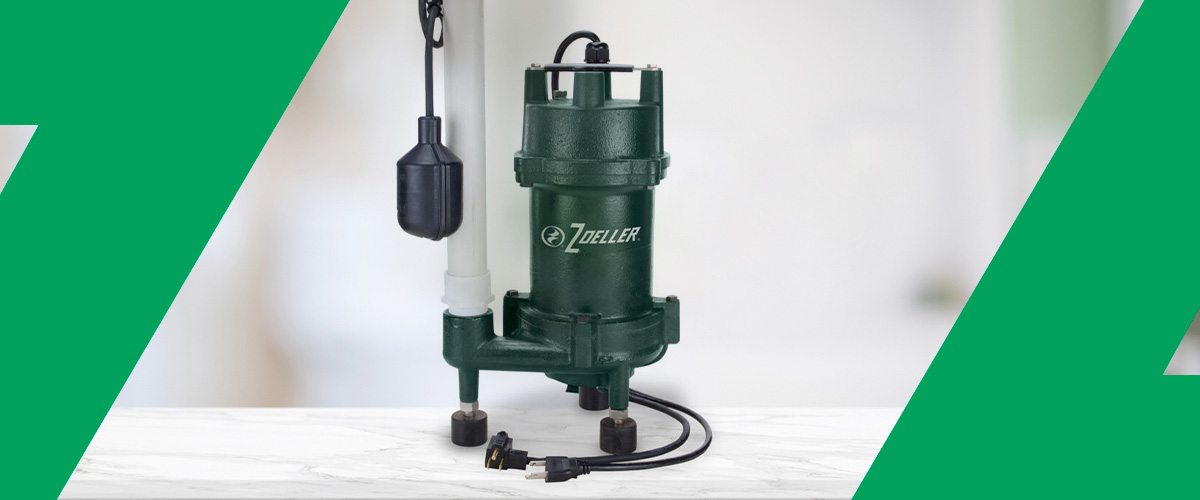Grinder pumps are crucial in wastewater management. They handle solids that regular pumps can’t.
Understanding grinder pump troubleshooting can save you time and money. These pumps are vital for homes and businesses, keeping wastewater systems running smoothly. Issues with grinder pumps can cause backups and unpleasant odors. Knowing how to identify and fix common problems ensures your system works efficiently.
This guide will help you navigate grinder pump troubleshooting steps. Learn how to spot issues early, maintain your pump, and avoid costly repairs. Let’s dive into the essentials of keeping your grinder pump in top shape.

Introduction To Grinder Pumps
A grinder pump is an essential component in many wastewater systems. It helps to process and move wastewater from your home to the main sewer line. Understanding how it works can save you from potential problems and costly repairs.
Purpose And Function
The primary purpose of a grinder pump is to break down solid waste. It turns waste into a slurry that can be easily pumped through pipes. The pump activates when the wastewater level in the tank reaches a certain point.
| Component | Function |
|---|---|
| Grinder | Shreds solid waste |
| Motor | Powers the grinder and pump |
| Impeller | Moves the wastewater |
| Float switch | Activates the pump |
When the wastewater level drops, the pump turns off. This cycle repeats as necessary.
Common Applications
Grinder pumps are used in various settings. They are common in homes, especially those in low-lying areas. They are also used in commercial properties and industrial sites. Below are some typical applications:
- Single-family homes
- Small businesses
- Schools and universities
- Hospitals
- Manufacturing facilities
In these settings, grinder pumps ensure that wastewater is efficiently processed and moved to the main sewer system. This helps to prevent clogs and backups.
Identifying Grinder Pump Issues
Grinder pumps play a crucial role in managing wastewater. They grind solid waste into smaller particles, making it easier for the waste to move through the pipes. However, like any mechanical device, grinder pumps can experience issues. Identifying these problems early can save you from costly repairs and serious damage.
Signs Of Malfunction
One of the first steps in troubleshooting a grinder pump is to identify signs of malfunction. Here are some common indicators:
- Unusual noises: Grinding or humming noises can indicate a problem.
- Frequent clogs: If your system clogs often, the pump might not be working properly.
- Bad odors: Foul smells can signal a malfunctioning pump.
- Slow drainage: Water draining slowly from sinks or toilets may point to pump issues.
Common Symptoms
Understanding the symptoms can help you diagnose the problem more effectively. Here are some common symptoms of grinder pump issues:
- Pump not turning on: This could be due to electrical problems or motor failure.
- Overheating: The pump might overheat if it’s running for too long.
- Frequent tripping of circuit breaker: Electrical issues might be the cause.
- Water backup: If water backs up into your home, the pump might be failing.
To keep your grinder pump in good working condition, regular maintenance is key. If you notice any of these signs or symptoms, it might be time to call a professional for a thorough inspection.
Basic Troubleshooting Steps
Experiencing issues with your grinder pump? First, check for any power supply problems. Also, inspect the pump for blockages or debris.
Having issues with your grinder pump? Don’t worry. Many problems have simple solutions. By following basic troubleshooting steps, you can often identify and fix the issue. This guide will help you get started.
Safety Precautions
Always prioritize safety. Turn off the power to the grinder pump before you start. This prevents electrical shocks. Wear gloves and safety glasses to protect yourself. Make sure the area is well-ventilated.
Initial Inspections
Start with a visual check. Look for obvious signs of damage or wear. Inspect the power cord for cuts or frays. Ensure the pump is properly plugged in. Check for any unusual noises or vibrations. These can signal internal problems. Examine the float switch. It should move freely. If it’s stuck, it won’t activate the pump.
By following these steps, you can often diagnose and resolve common grinder pump issues. If problems persist, contact a professional for further assistance.
“`

Credit: zoellerathome.com
Electrical Problems
Electrical problems can disrupt the normal functioning of a grinder pump. These issues can often be tricky to diagnose. Understanding the common electrical problems can help you troubleshoot effectively.
Power Supply Issues
One of the first areas to check is the power supply. Ensure the grinder pump is getting power. Check if the power cord is plugged in properly. Inspect the power outlet for any visible damage. Sometimes, the outlet might not be supplying power. Test the outlet with another device to be sure.
Circuit Breaker Troubles
Another common issue involves the circuit breaker. A tripped breaker can cut off the power to the grinder pump. Check your home’s electrical panel. Look for any tripped breakers. If you find one, reset it and see if the grinder pump starts working. Frequent tripping of the breaker indicates a deeper issue. You may need to consult an electrician for further inspection.
Mechanical Failures
Mechanical failures in grinder pumps can lead to various issues. These issues can range from minor inconveniences to major disruptions. Understanding these mechanical failures is essential for effective troubleshooting.
Clogged Impellers
Clogged impellers are a common issue. They occur when debris gets stuck in the impeller. This debris can include wipes, hair, and other non-biodegradable items. Clogged impellers reduce the efficiency of the pump. Here are some signs of a clogged impeller:
- Reduced water flow
- Strange noises from the pump
- Frequent pump cycling
To fix this, you need to remove the clog. First, turn off the power. Next, open the pump and check the impeller. Remove any debris carefully. Use gloves and tools to avoid injury. Once clear, reassemble the pump and test it.
Damaged Blades
Damaged blades can also cause mechanical failures. These blades are crucial for grinding waste. Over time, they can become dull or broken. Damaged blades lead to inefficient grinding. Here are some indicators of damaged blades:
- Poor grinding performance
- Strange vibrations
- Unusual noises
To address this, you need to inspect the blades. Again, turn off the power first. Open the pump and examine the blades. If they are dull, sharpen them. If broken, replace them. Use the manufacturer’s guide for precise instructions. Once done, reassemble the pump and test its function.
| Issue | Signs | Solution |
|---|---|---|
| Clogged Impellers | Reduced water flow, strange noises, frequent cycling | Remove debris from impeller |
| Damaged Blades | Poor grinding, vibrations, unusual noises | Sharpen or replace blades |

Credit: www.youtube.com
Pump Motor Issues
Grinder Pump Troubleshooting can be a challenging task, especially when dealing with pump motor issues. The motor is a crucial component of the grinder pump, and any malfunction can disrupt the whole system. In this section, we will delve into common motor issues such as overheating and burnout, and provide practical solutions to these problems.
Overheating Motors
Overheating is a common problem in grinder pump motors. Several factors can cause the motor to overheat. This includes prolonged usage, lack of proper ventilation, and electrical issues.
- Prolonged Usage: Continuous operation without breaks can cause the motor to overheat. Allow the motor to cool down between extended uses.
- Ventilation: Ensure the motor has adequate airflow. Clear any obstructions around the pump.
- Electrical Issues: Faulty wiring or incorrect voltage can lead to overheating. Check the electrical connections and ensure they are secure and correct.
To prevent overheating, regularly inspect the pump and perform maintenance. Replace any faulty parts immediately to avoid long-term damage.
Motor Burnout
Motor burnout is another serious issue for grinder pumps. This occurs when the motor fails completely due to excessive wear and tear or electrical faults.
| Cause of Burnout | Solution |
|---|---|
| Excessive Wear and Tear | Regularly inspect and replace worn-out components. |
| Electrical Faults | Ensure proper voltage and secure electrical connections. |
| Overloading | Avoid running the pump beyond its capacity. |
To avoid motor burnout, follow the manufacturer’s guidelines for operation. Perform regular maintenance checks and replace parts as needed. By paying attention to these details, you can extend the life of your grinder pump motor and ensure it runs smoothly.
Preventative Maintenance
Preventative maintenance is crucial for ensuring the smooth operation of your grinder pump. Regular upkeep extends the pump’s lifespan and prevents costly repairs. Follow these steps to keep your grinder pump in top shape.
Regular Inspections
Perform regular inspections to identify potential issues early. Check for leaks, unusual noises, and signs of wear. Look at the electrical connections to ensure they are secure. Inspecting the pump every few months can save you from bigger problems later.
Cleaning Tips
Regular cleaning helps maintain your grinder pump’s efficiency. Remove any debris around the pump. Clean the pump’s basin to prevent clogs. Use a non-abrasive cleaner to avoid damage. Keeping the pump clean ensures smooth operation and reduces the risk of malfunctions.
When To Call A Professional
Call a professional if your grinder pump shows signs of malfunction, such as strange noises or constant running. Foul odors or sewage backups also indicate a need for expert help. Prompt attention prevents further damage and costly repairs.
Grinder pumps play a vital role in your plumbing system. They help move wastewater from your home to the main sewer line. Sometimes, these pumps face problems. Knowing when to call a professional can save you time and money.
Complex Repairs
Some grinder pump issues are easy to fix. Simple clogs or minor adjustments might not need expert help. But complex repairs are different. These tasks often need special tools and skills. Trying to fix these problems yourself can make things worse. If you hear strange noises or notice a foul smell, call a professional. They have the knowledge to diagnose and repair the issue correctly.
Warranty Considerations
Your grinder pump might come with a warranty. This warranty can cover repairs or replacements. But doing your own repairs can void this warranty. Always check the warranty terms before you start any work. Call a professional to handle the repairs. They can ensure the warranty stays valid. This can save you money on future repairs.
“`
Frequently Asked Questions
What Is A Grinder Pump?
A grinder pump is a wastewater conveyance device. It grinds waste into a slurry. Then pumps it to the sewer system.
How Do I Know If My Grinder Pump Is Faulty?
Common signs include alarms, slow drainage, and sewage backups. Unusual noises can also indicate issues.
Why Is My Grinder Pump Alarm Going Off?
The alarm usually signals high water levels. This could mean a clog, electrical issue, or pump failure.
How Do I Reset My Grinder Pump?
Locate the alarm panel. Press the reset button. If the alarm continues, contact a professional.
Can I Fix My Grinder Pump Myself?
Simple issues like resetting the alarm can be DIY. For major problems, always call a professional plumber.
Conclusion
Troubleshooting a grinder pump can seem daunting, but it’s manageable. Start with basic checks like power supply and blockages. Regular maintenance prevents most issues. If problems persist, consult a professional. Keeping your grinder pump in good shape ensures a smooth-running system.
Always stay proactive with care and inspections. Your home’s plumbing will thank you. Don’t let small issues become big problems. Happy troubleshooting!
